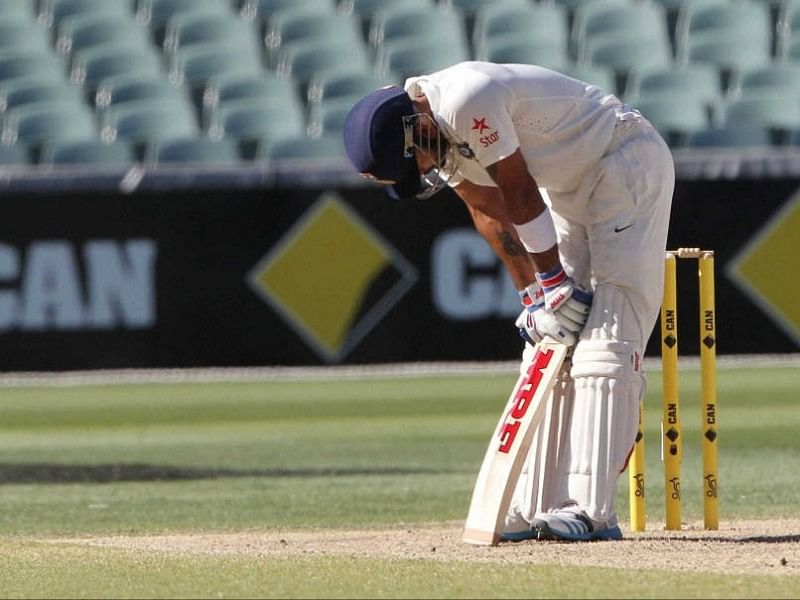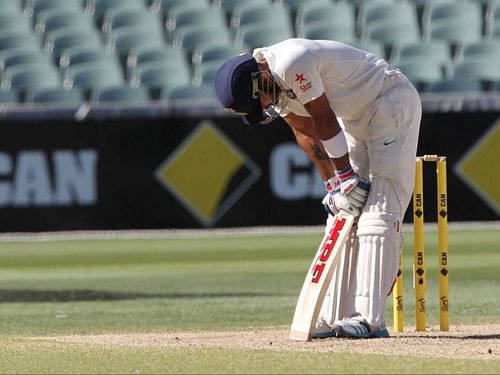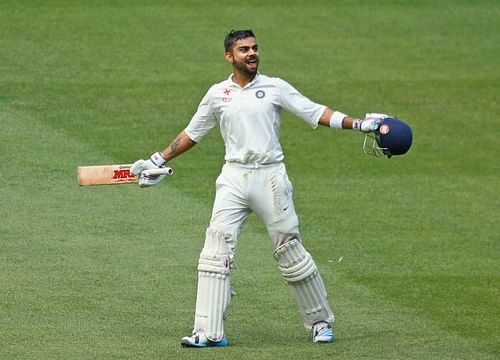
The making of Captain Kohli

December 2014. Peak Summer in Melbourne. Pleasant temperature. Glorious sunshine all over the city. It was against this kind of a backdrop that India and Australia took the field in the Boxing Day Test, the third in a series of four. Australia were leading 2-0. It was not fair, the scoreline. Not fair at all. India had lost but they were not beaten.
One shot had made the difference. 2-0 could easily have been 1-1. It was during the first match in Adelaide. A typical Virat Kohli ‘flat batted pull’. He had played it many times in his career. He had played it many times in this match. He played it in practice. He played it in sleep. It had always come off. But not on 13 December, it didn’t. He hit it straight down the throat of deep midwicket.
India were chasing 364 on the last day. Kohli had scored 141 of them. Kohli cut. Kohli drove. Kohli flicked. Kohli swept. Kohli hooked. Kohli pulled. Kohli thrilled. Indians, Australians, everyone. And Kohli pained. The opposition. It was a masterpiece.
Maybe it was more. It gave India hope. It gave India the belief that they could win. Against a better team, in their own backyard. Kohli got them within 60 runs of the target. And then Kohli fell. With him, fell the hopes of a nation.
The Australian team were overjoyed. They knew they had won. It didn’t matter that three wickets were still remaining. They had defeated Kohli. They had defeated India. Kohli was on his haunches. The Australians were celebrating near the boundary. The debutant Karn Sharma stood motionless at the non strikers end. Kohli was still there. He didn’t want to go. After several seconds, he finally dragged himself back to the pavillion.
The standing ovation didn’t matter one bit. It was a pretty symbolic sight. Kohli, on his haunches, nobody by his side. That was the case in this match. That was the case in many others. Virat Kohli, the last man standing.
When Kohli could not play under Dhoni any more
The loss in the Brisbane Test that followed was not so dramatic. Kohli didn’t score runs. India didn’t score many either. Certainly not when it mattered. It was because of the bowlers that the match became a bit interesting. They didn’t turn up until Day 4. But when they did, Australia found it tough to chase 130. They had only four batsmen left when they reached the finish line. They would have had only three had Virat Kohli not dropped a sitter in the slips.
He was never there in Brisbane. He had gotten used to leading, with the bat and in the field. He was not the captain in Brisbane. MS Dhoni had returned. Unlike Adelaide, things didn’t happen the way he wanted them to. He seemed a bit frustrated. He seemed off colour. He probably was.
Kohli loves to attack. Under Dhoni, India doesn’t. Kohli loves to sledge. Under Dhoni, India doesn’t. Kohli will not settle for anything less than a win. Under Dhoni, India will. Dhoni believes a draw is a better result than a loss. Kohli believes losing while going for a win is better than not trying. Kohli and Dhoni are at the opposite ends of the spectrum.
Once Kohli had a taste of captaincy, he could no longer play under Dhoni. The people wanted Kohli’s style of leadership. It was more exciting. It was more appealing. Dhoni was constantly being told to captain like Kohli. Dhoni was told to be more aggressive. Dhoni was told to be all things he wasn’t. That’s why he quit. It was time to pass the baton.
The days in Melbourne preceeding the Boxing Day Test had been gorgeous. Glowing, bright yellow sunrise. Dim, orange, faded sunset. Pretty much like the careers of Virat Kohli and MS Dhoni. Virat Kohli’s on the rise, the Indian captaincy just a step away and MS Dhoni’s on the wane, the end not too far off.
When Indian cricket changed hands
That end came in Melbourne. India started the Melbourne Test on the back foot. There was a feeling that India had given all they had, that they would soon run out of steam. For the first quarter, it proved to be true. India conceeded over 500 runs in the first innings for the third consutive time. But in this match, they never bowled well. They never created chances. They were never in the game.
India needed their batsmen to stand up. India needed their batsmen to salvage some pride. Virat Kohli did. This time, he had Ajinkya Rahane for company. Together, they thwarted the highly rated Australian seam attack. Together, they consolidated. Together, they counterattacked. Together, they reached their centuries. Together, they took India to a position of considerable strength..
During the course of this innings, Kohli grew, in stature, and as a person. He attacked Australia, with his strokes, with his words, with his game, with his personality. He spared no one. But it was Mitchell Johnson that came in for the most stick. He was smashed. He was sledged. He was smashed more. He was sledged more.

But Kohli was not always on top. There was a phase in the game when Johnson had Kohli’s number. Nearing his hundred, Johnson unintentionally hit Kohli while throwing to the strikers end. It put Kohli off. It angered him. It made him lose his concentration. It disrupted him. It almost cost him his wicket.
He edged, he missed, he offered chances, he was dropped, he was lucky. It was the sort of period you don’t want your best batsman to have. You don’t want him to be affected by small incidents, you don’t want him to throw his wicket away.
But Kohli survived. He sledged more. He smashed more. While batting, he didn’t have to confine to Dhoni’s style. He was free. He was aggressive. He was in Australia’s face. He was booed. He didn’t care. He sledged even more. He smashed even more.
But with India still nearly seventy runs behind Australia, Kohli, in the last over of the day, went for an expansive drive off Johnson and edged it to the wicket keeper.
He was the eighth man out. He had done his job. He had played an innings of supreme importance. But being the player he is, he was expected to be more responsible, he was expected to play out the day, he was expected to take India to safety.
But this innings, and the entire Australian tour made us realise that he will never take the safety first approach, he will never back down, he will never play for a draw, he will never be anything but aggressive. This is why he stands out. He will never wait for things to happen. He will make things happen.
Challenges facing captain Kohli
The Melbourne Test ended with India batting out time, looking for a draw. It was fitting that it was MS Dhoni who was at the the crease as India played out the last few overs under fading light. It was one final rearguard, from a man who never wanted to lose.
In his last attempt, he was successful. He rescued India. He guided them to safety. The series was now done. Even if they won the last match, they could not win the series. Dhoni felt his time was up. It was Kohli’s time now. It was his turn to face the music. Dhoni quit. The captaincy changed hands, from someone who never wanted to lose, to someone who always wanted to win.
As the sun set on 2014, Dhoni walked off, leaving Kohli in charge, giving him a responsibility like no other. The responsibility of resurrecting Indian Test Cricket, the responsibility of making India world beaters again.
Kohli will now be under a lot of pressure. Kohli thrives when he is under pressure. Kohli thrives when he is given responsibility.
But there is this hint of fear, that the responsibility could weigh Kohli down, that the captaincy could affect his batting. We sometimes forget, that for all his super human abilities with the bat, the Indian Test Captain is just a 26 year old boy from Delhi.
This tour to Sri Lanka next month will be the first of many challenges for Virat Kohli. He will be expected to lead the team like he did in Australia, always going for wins, getting into the opponent’s skin, scoring a truckload of runs, never backing down, never giving up.
The challenge for him will be to be aggressive even when his mediocre bowling attack doesn’t support him, even when his inexperienced batting line up fails to fire. The challenge for him will be to score runs when no one else will. The challenge for him will be to make the Indian team believe in themselves.
The challenge for him will be to make the country believe in their team. The challenge for him will be to make the Indian team win games of Test Cricket. He will probably manage to do all of that. This is how much we believe in Virat Kohli. This is how much Virat Kohli believes in himself.